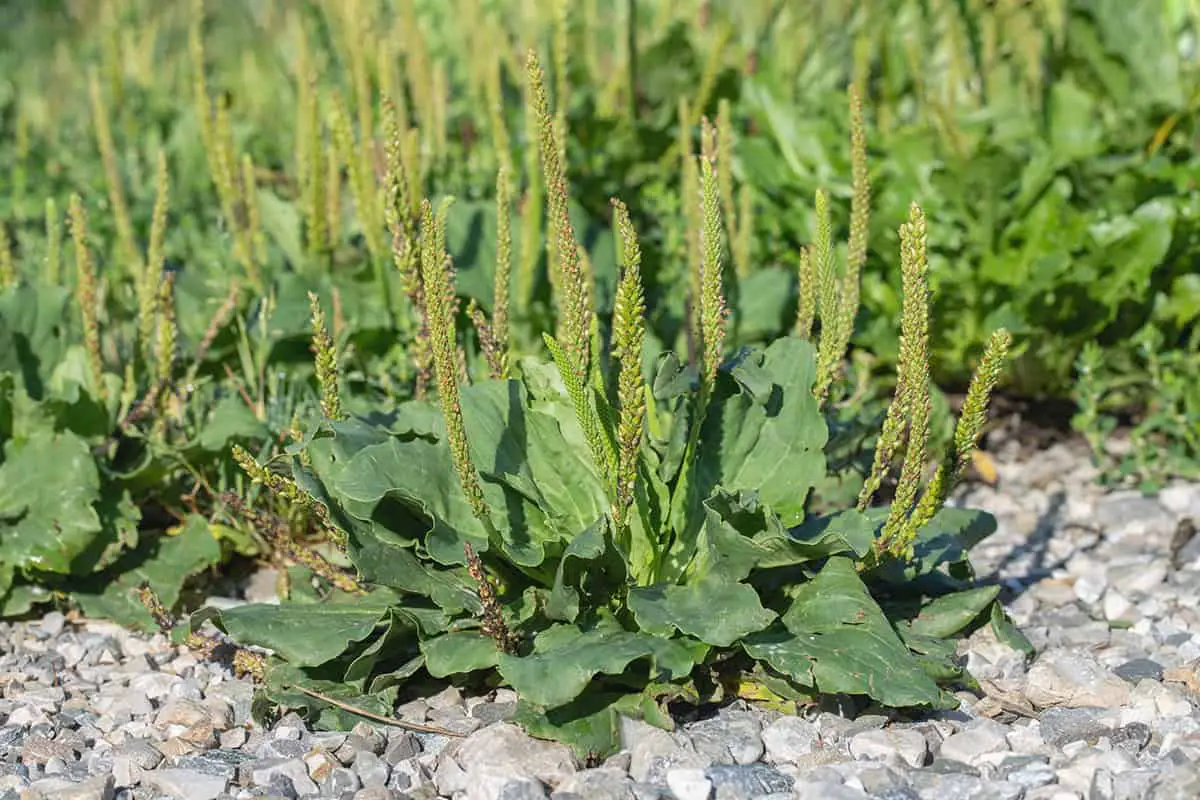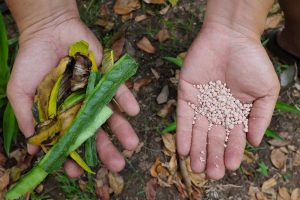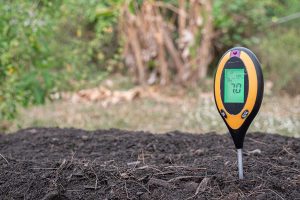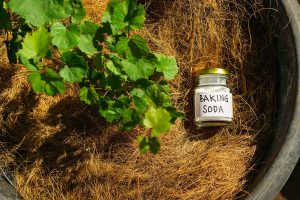You’re out on a hike and notice various plants growing along the trail, wondering if any of them have medicinal properties. Medicinal wild plants have been used for centuries to treat common ailments. Find out which medicinal wild plants can be used to support your health naturally.
Table of Contents
- Dandelion (Taraxacum Officinale)
- Stinging Nettle (Urtica Dioica)
- Yarrow (Achillea Millefolium)
- Elderberry (Sambucus Nigra)
- Plantain (Plantago Major)
- Chickweed (Stellaria Media)
- Red Clover (Trifolium Pratense)
- Burdock (Arctium Lappa)
- Wild Garlic (Allium Ursinum)
- Wild Ginger (Asarum Canadense)
- Peppermint (Mentha Piperita)
- Valerian (Valeriana Officinalis)
- Skullcap (Scutellaria Lateriflora)
- Mullein (Verbascum Thapsus)
- Comfrey (Symphytum Officinale)
- Goldenseal (Hydrastis Canadensis)
- Meadowsweet (Filipendula Ulmaria)
- Chicory (Cichorium Intybus)
- Horehound (Marrubium Vulgare)
- Feverfew (Tanacetum Parthenium)
Dandelion (Taraxacum Officinale)
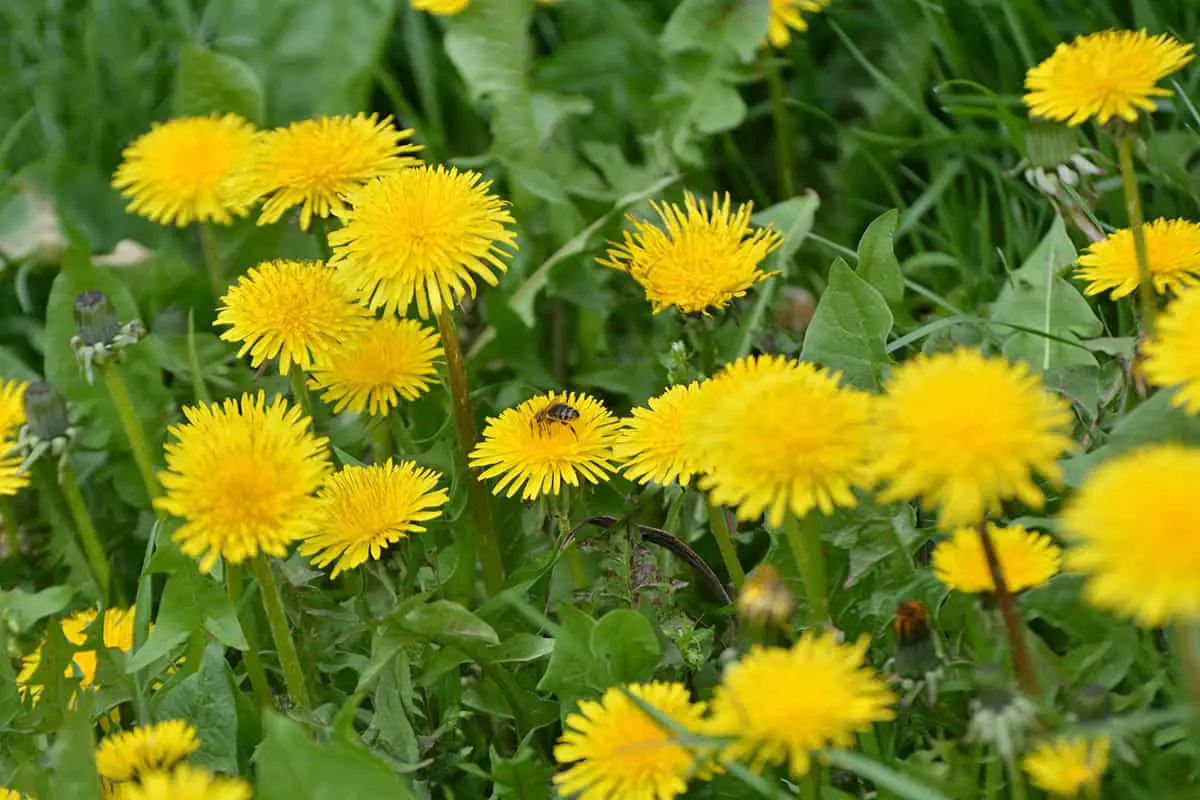
Recognized by its jagged leaves, Dandelion is a common yet often underappreciated plant. You might know it as a persistent weed in your garden. Despite this, dandelions offer many medicinal benefits. The entire plant is edible, with each part offering different health properties.
The leaves support digestion. They are high in vitamins and can be used fresh in salads. The roots detoxify the liver and can be roasted to create a coffee substitute. Dandelion flowers make a soothing tea.
People have used dandelions in herbal medicine for centuries. The plant is rich in antioxidants. These compounds fight the harmful effects of free radicals in your body. Antioxidants may reduce the risk of chronic diseases and slow aging. Dandelion may also help with inflammation and blood sugar control.
When you decide to use dandelion for its health benefits, select plants from areas free of pesticides. Wash them thoroughly to remove dirt and contaminants. Choose young, tender leaves for a less bitter flavor. Make sure you positively identify the plant as Taraxacum officinale before consumption.
Stinging Nettle (Urtica Dioica)
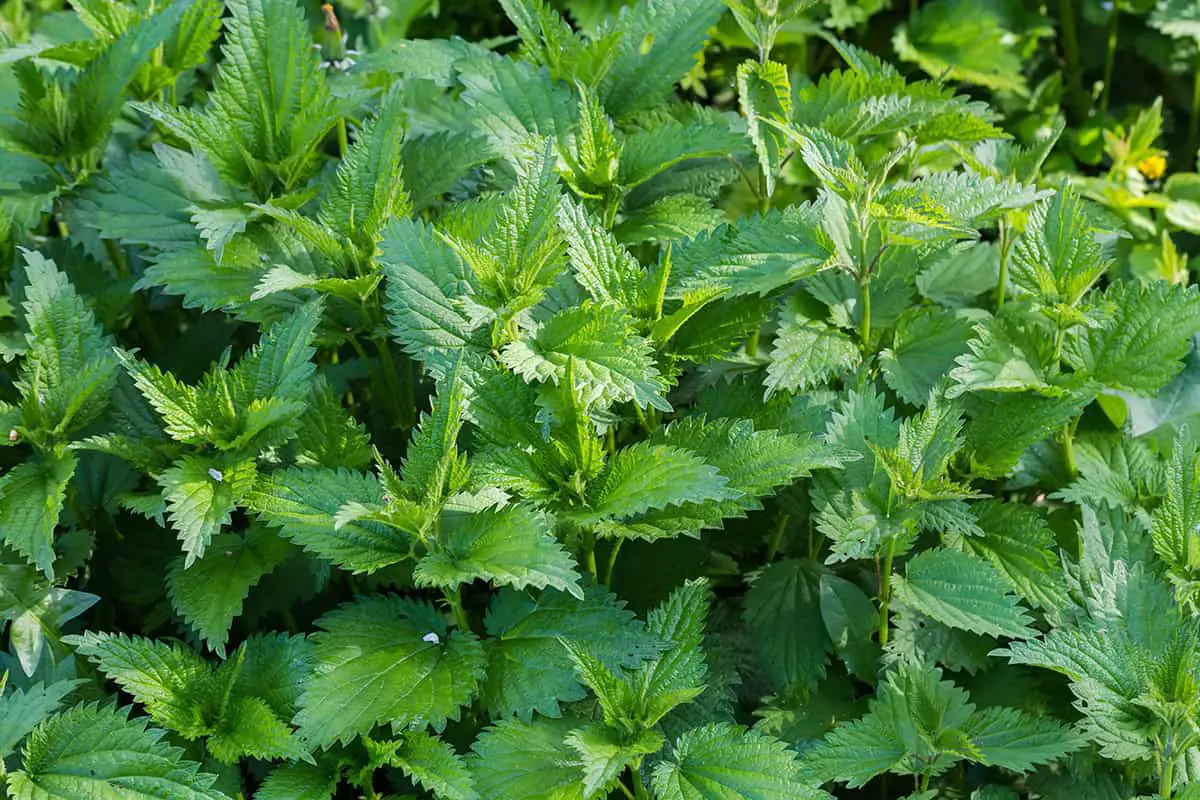
Stinging nettle stands out as a perennial herb found worldwide. It grows in moist environments, often near streams and woodlands. When you touch its leaves, tiny hairs can cause a stinging sensation. This plant isn’t just notable for the sting it gives; it also has a place in natural medicine.
The leaves of stinging nettle are rich in nutrients. You’ll find vitamins A, C, and K, as well as several minerals such as iron, calcium, and magnesium. The plant’s robust nutrient profile lends it to many health benefits. You can also make a nutritious tea by brewing the leaves.
Historically, people have used stinging nettle to treat various ailments, dating back to ancient societies. This herb helps ease joint pain and symptoms of arthritis. It also serves as a diuretic and aids in urinary health.
To prepare stinging nettle, you can reduce its stinging characteristics through cooking or drying. This makes it safe to eat, and you can enjoy it as part of your diet. In folklore and modern practices, stinging nettle continues to support health and wellness.
Precautions and Usage:
Always handle stinging nettle with care due to its potential to irritate the skin. It’s crucial to properly identify the plant before use to ensure safety. If you consider adding stinging nettle to your regimen, consult with a healthcare provider, especially if you have existing health conditions. This herb can interact with medications and conditions, so professional advice is key.
Yarrow (Achillea Millefolium)

Yarrow is a hardy plant found across the Northern Hemisphere. You might recognize its delicate, feather-like leaves and clusters of white to pink flowers. Achillea Millefolium has a rich history in herbal medicine.
Historically, you might find yarrow mentioned for its wound-healing properties. Its scientific name even references the legendary Greek hero Achilles. He allegedly used it to treat soldiers’ injuries. Nowadays, many still value yarrow for its potential benefits.
In your garden, this perennial shows resilience and adaptability. It can thrive in poor soil conditions, showing flourishes of color from early summer to late fall. If you’re looking to support local wildlife, yarrow attracts beneficial insects and pollinators.
Scientific research supports some of Yarrow’s traditional uses. It contains compounds like achilleine which encourage blood clotting. For minor wounds, yarrow may expedite healing. Always consult a healthcare provider before using yarrow medicinally.
Elderberry (Sambucus Nigra)
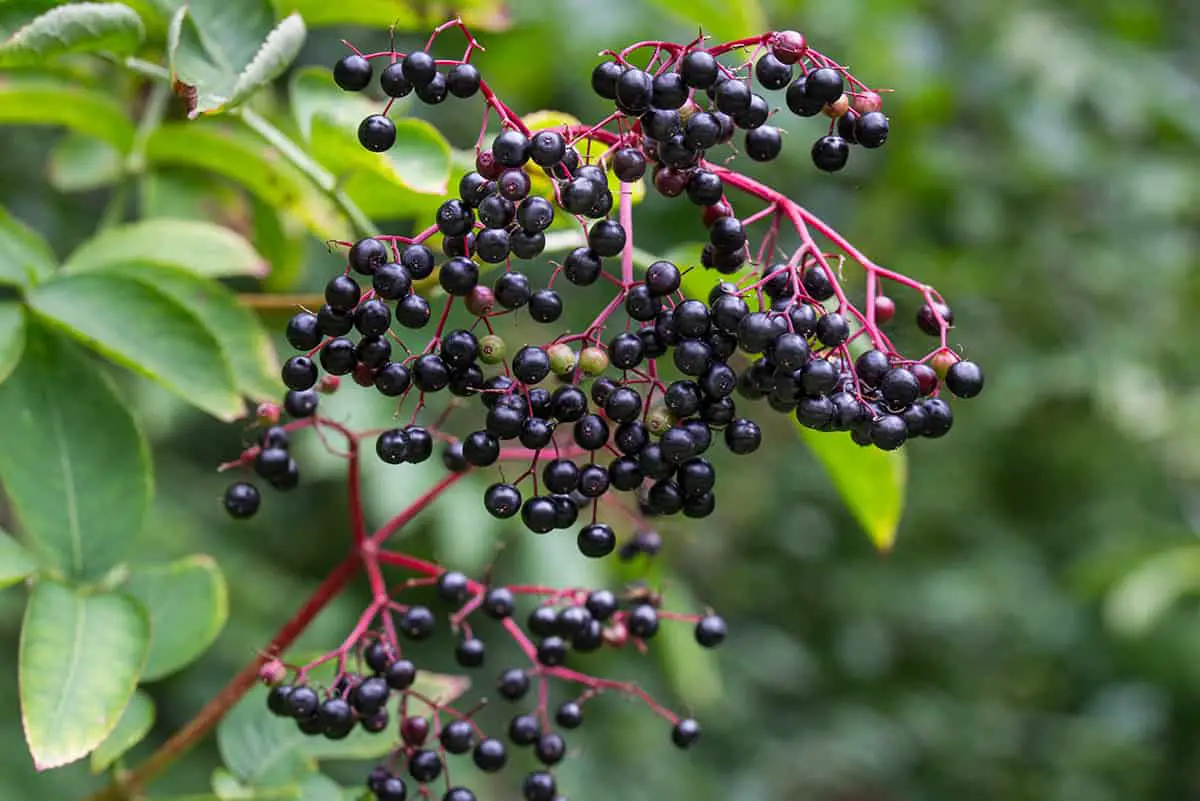
Elderberry, scientifically known as Sambucus Nigra, is a plant with notable medicinal qualities. When you hear “elderberry,” you may think of a natural remedy. This plant grows as a large bush or small tree and bears dark purple berries.
Elderberry plants have clusters of small, white, or cream flowers. These turn into the deep purple berries you know for their health benefits.
You can find elderberry across various regions, including both North America and Europe. The related American elderberry is called Sambucus canadensis.
Medicinal Uses:
Elderberries are rich in vitamins and antioxidants. Traditionally, they support immune health. You may use them to make syrups or teas. Always remember to cook elderberries before consumption, as their raw berries can be toxic.
Elderberry’s Potential:
Research shows the potential for elderberry to reduce cold and flu symptoms. The University of New Hampshire Extension speaks on its benefits and how to prune the plant for a better yield.
To incorporate elderberries into your wellness routine, seek out reputable sources. High-quality elderberry products may offer you a natural boost. As with any medicinal plant, it’s crucial to use them correctly to ensure safety and effectiveness.
Plantain (Plantago Major)
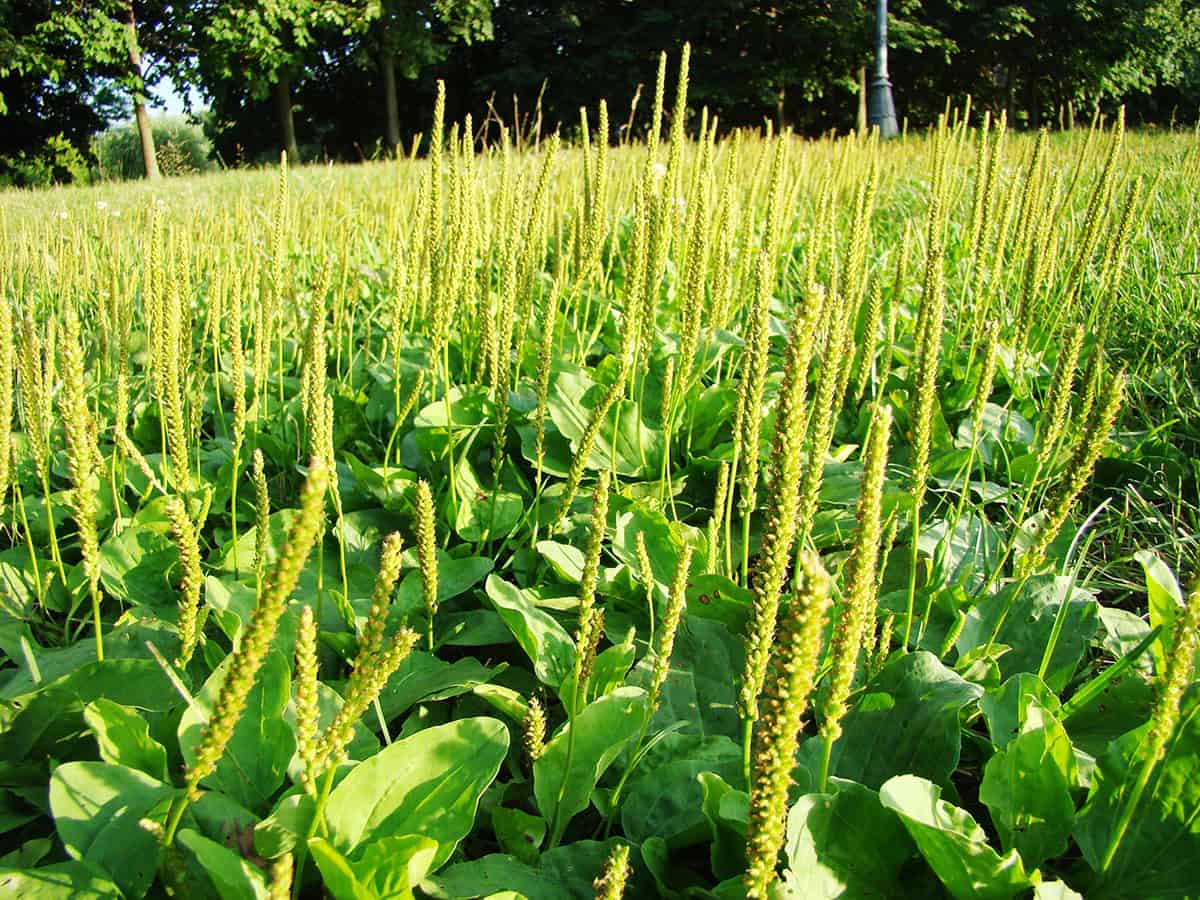
Plantago major, commonly known as plantain, is a perennial herb. The leaves of plantain are broad and green and can be found in many yards. Often regarded as a weed, this plant thrives in disturbed areas. You might notice the ribbed leaves that form a rosette close to the ground.
Your garden could be a source of plantain. Medicinally, people use it for its soothing effects on insect bites and minor wounds. The leaves contain compounds such as flavonoids and iridoid glycosides. These have potential anti-inflammatory properties.
You can identify plantain by the distinctive parallel veins on its leaves. In summer, it sends up a leafless flower stalk. The small, inconspicuous flowers cluster along this spike. Plantain seeds, small and brown, follow the flowers.
As an edible, young plantain leaves are nutritious. They are high in calcium and vitamins, including A, C, and K. The younger leaves are tender enough to eat raw. Older leaves can be tough but are suitable for cooking.
Chickweed (Stellaria Media)
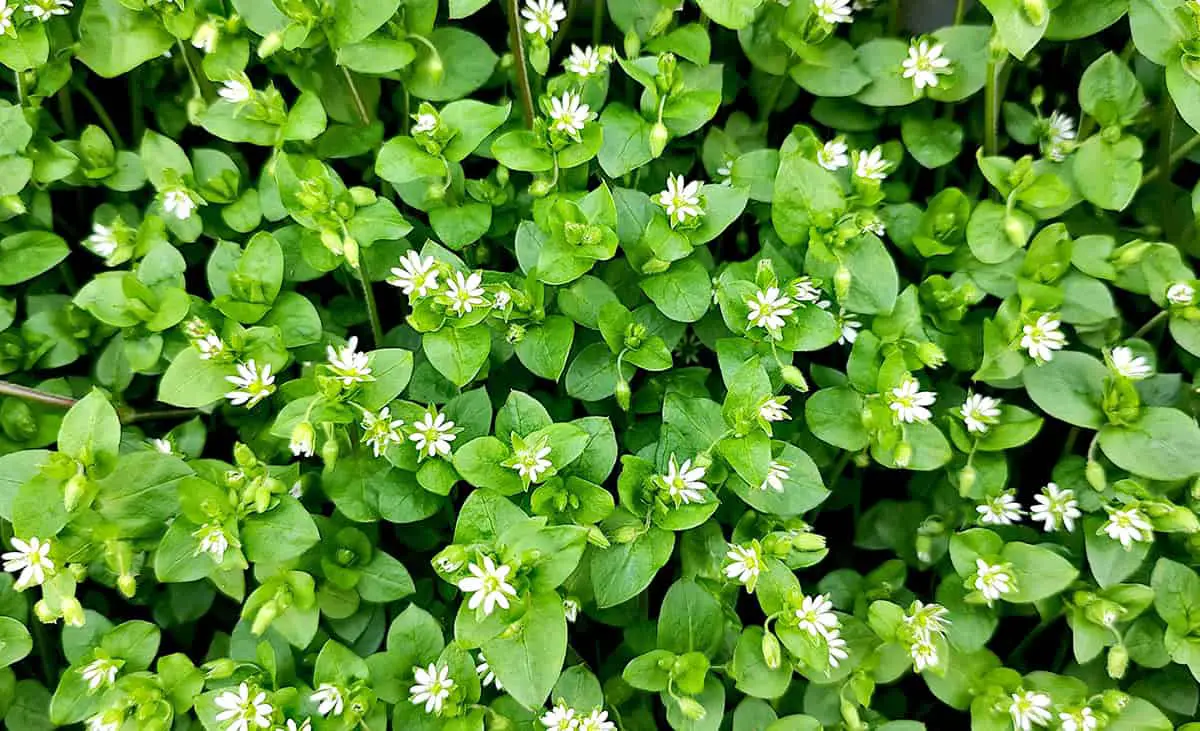
Chickweed is known for its small, star-shaped flowers. It thrives in many environments, making it a common sight in gardens and yards. This plant goes beyond being a mere weed, as it holds a place in herbal medicine.
Your skin can benefit from chickweed’s soothing properties. It is used externally to calm itching from conditions like eczema. Chickweed also has nutritional qualities, being a source of vitamins and minerals.
In the garden, chickweed is often seen as an invader. Yet, you can harness it as a ground cover, contributing to soil health. It’s important to identify chickweed correctly before using it. Look for distinctive hairs along one side of the stem.
When considering chickweed for culinary uses, you’ll find it has a mild and pleasant flavor. It can be a good addition to salads and sandwiches. Always ensure the chickweed is clean and free from pesticides.
Remember, chickweed’s small seeds can lead to prolific growth. Manage it in your garden to prevent it from overtaking other plants.
Red Clover (Trifolium Pratense)
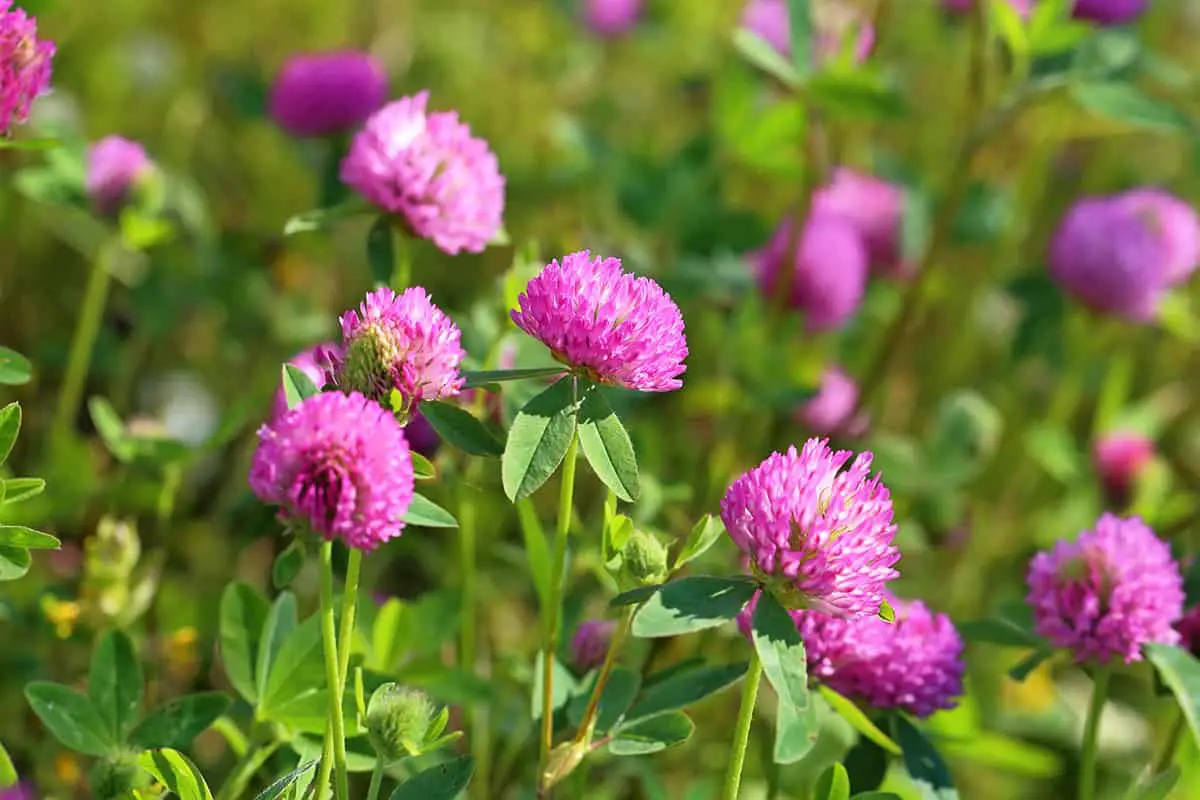
Red clover, with the scientific name Trifolium pratense, stands out in the plant kingdom. You often find it growing as a forage crop. Farmers use it to feed livestock because it enriches the soil it grows in.
This plant not only improves soil fertility but also holds value in traditional medicine. Your ancestors may have used red clover to treat various ailments. Today, you can find it in medicinal teas. These teas may soothe sore throats and help with inflammation.
The clover has a distinct look; it’s recognized by its pink to purplish flowers. Each stem typically bears three oval, hairy leaves. These leaves frequently possess a characteristic white ‘V’ marking.
If you’re exploring its uses, you’ll notice red clover’s health claims. Research indicates potential benefits. However, always consult a healthcare provider before you try new herbal remedies.
Burdock (Arctium Lappa)
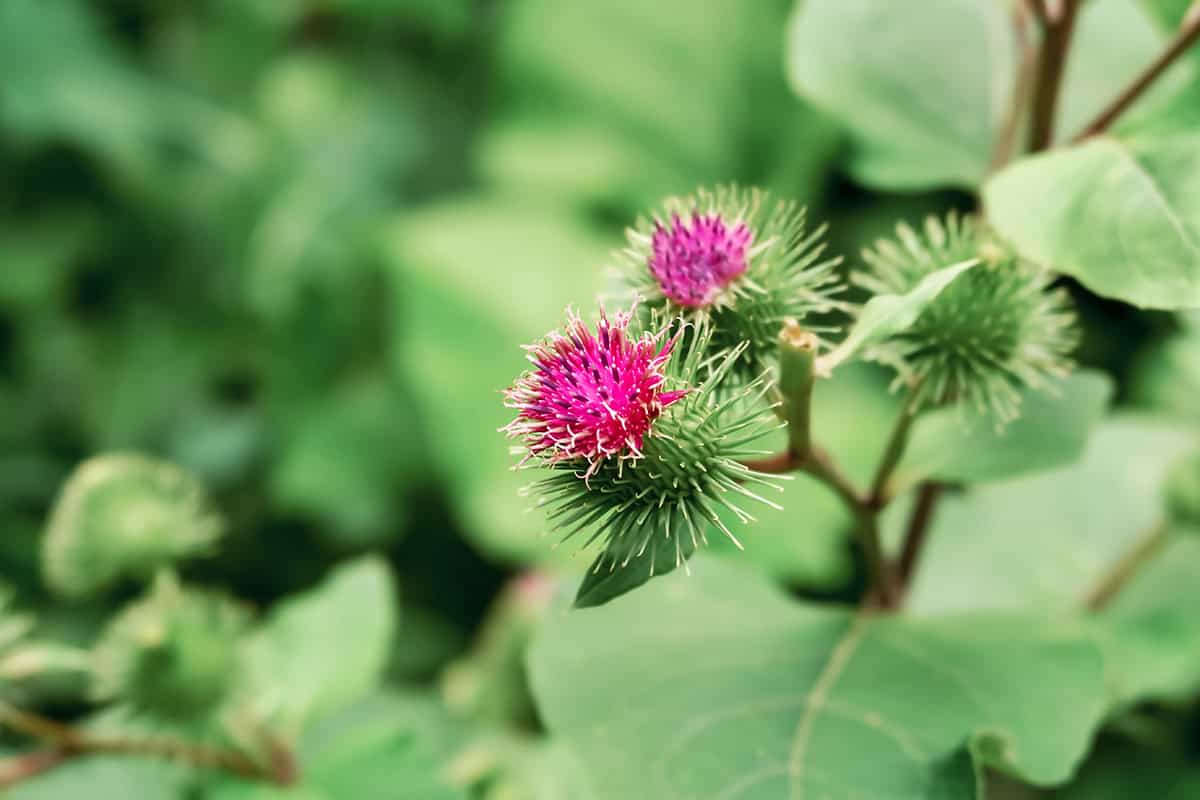
Burdock is known for its edible roots and medicinal properties. You might recognize this plant from its burs that cling to clothes and fur. It belongs to the Asteraceae family and garners appreciation for its deep roots that can be a source of food.
In traditional medicine, Arctium lappa appears frequently. Its roots, leaves, and seeds serve in various health applications. For instance, you can use the roots as a detoxifying agent. In Japan, they have been eating it for centuries.
Cultivation of this plant requires sowing seeds in the summer. By autumn, you harvest these fleshy roots before they harden. You must peel the husk off for an edible part. Remember, burdock’s properties carry into its stems and seeds as well.
For your garden, Arctium lappa might add medicinal value. It does prefer soil rich in organic matter, though. You can improve the soil with compost and cover crops to support its growth. If you’re considering burdock, ensure it’s not listed as an invasive species in your area, as it is in some parts of the United States.
Wild Garlic (Allium Ursinum)
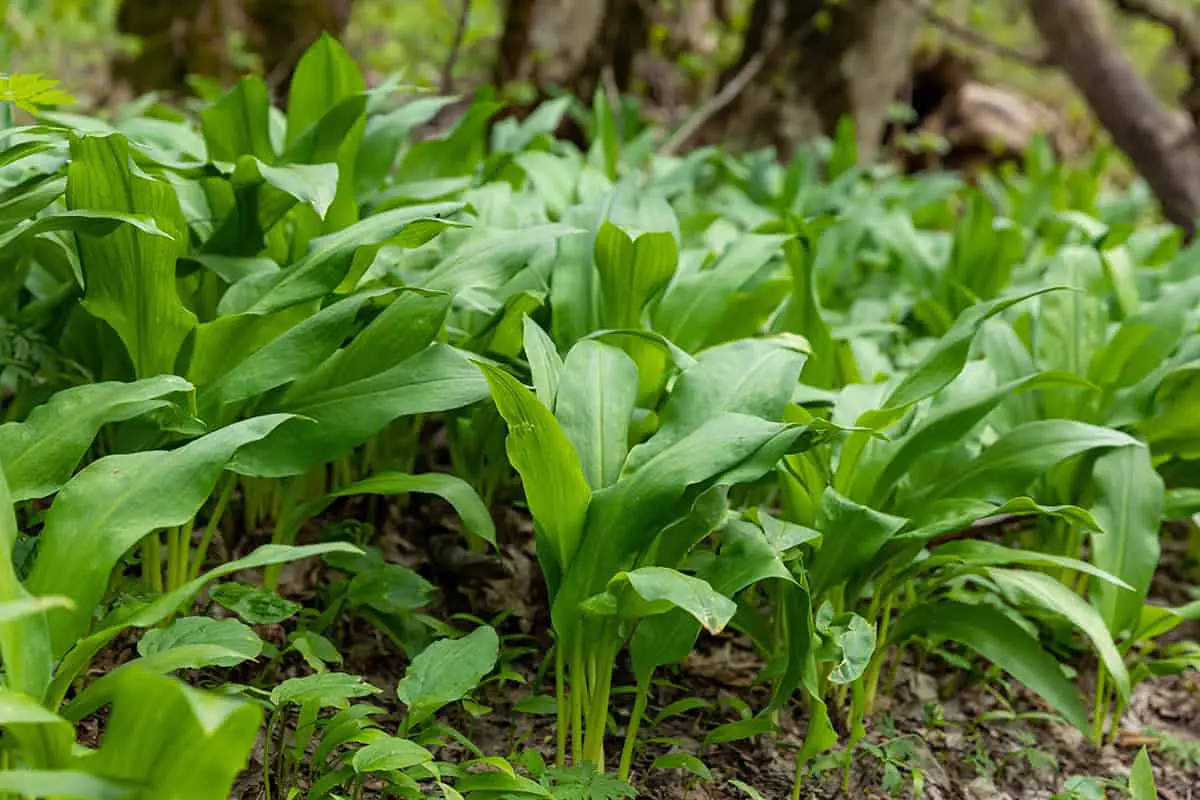
Wild Garlic, or Allium Ursinum, is a medicinal plant you may encounter in moist woodlands. Recognizable by its strong garlic scent, this wild plant has edible leaves. You can use them to add flavor to your dishes. In spring, Allium Ursinum features white flowers that form an umbrella-shaped cluster.
The leaves of Allium Ursinum are bright green and broad. You can pick them before the plant flowers for a milder taste. Wild Garlic has a history in traditional medicine. It may help support your digestive health and contribute to cardiovascular wellness.
You can also make a Wild Garlic pesto or soup. Ensure you correctly identify the plant before use, as it looks similar to poisonous species.
Wild Ginger (Asarum Canadense)

Wild Ginger, known scientifically as Asarum canadense, thrives in North America. This perennial is noteworthy if you’re exploring medicinal wild plants. You might recognize it by its heart-shaped leaves and distinct, bell-shaped flowers. These flowers usually bloom close to the ground.
Wild Ginger prefers the shade and flourishes in rich, moist soil. Its native habitat extends from Canada to the eastern United States. It’s not a drought-loving plant and needs constant soil moisture.
When seeking Wild Ginger, look for the unique foliage and the reddish-brown flowers. Remember, moist, shaded areas are your best bet. Ensure correct identification to avoid confusion with similar-looking plants.
Medicinal Use:
For centuries, Wild Ginger has been used in traditional medicine. It acts as a stimulant and has carminative properties, meaning it can help with digestive issues. While it can be effective, understand that it contains aristolochic acid, a compound with safety concerns.
Peppermint (Mentha Piperita)
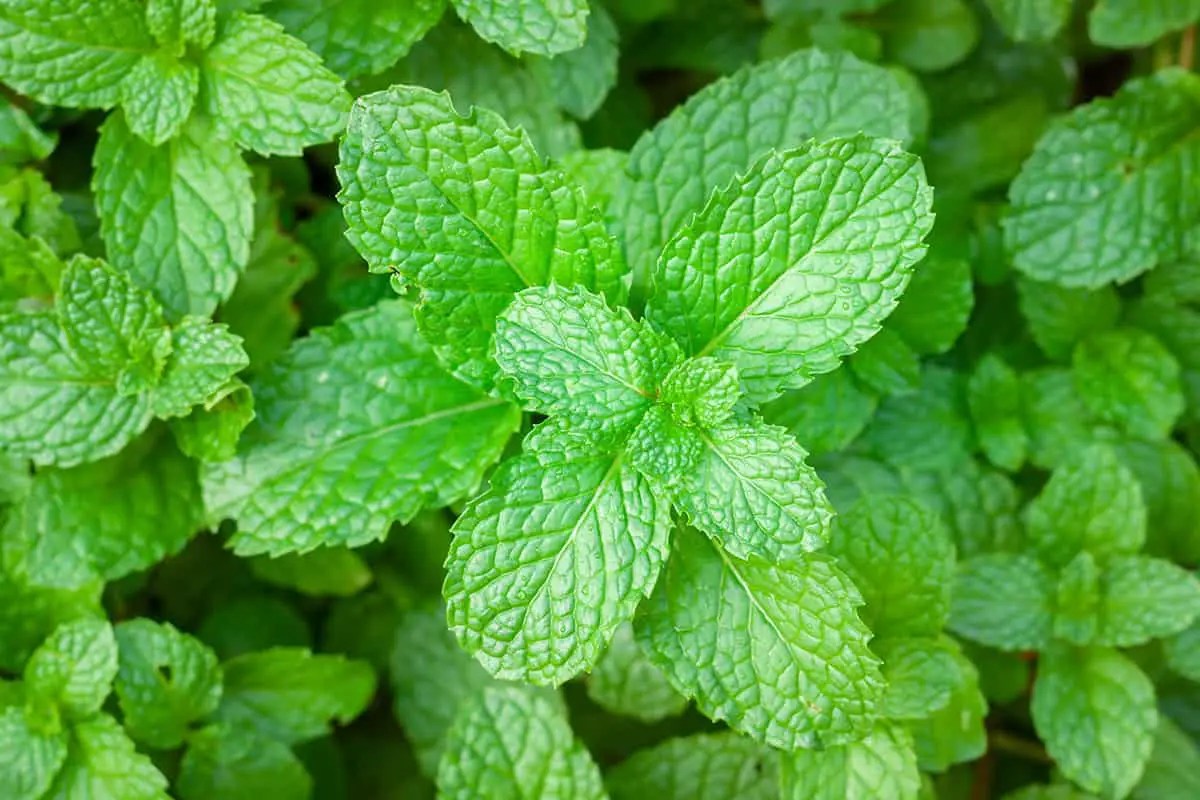
Peppermint is a perennial herb known for its refreshing fragrance and medicinal properties. This plant is a hybrid of watermint and spearmint. It thrives in moist conditions with partial or full sunlight. You can identify peppermint by its smooth stems and squared cross-section.
The leaves of peppermint are rich in essential oils. These oils are responsible for the plant’s potent aroma and health benefits. When crushed, the leaves release a strong minty scent. The oils are extracted from the leaves to create products like tea and essential oils.
In your garden, peppermint acts as an aggressive ground cover. It spreads rapidly through rhizomes. If you plan to grow peppermint, consider containing its spread to maintain garden order.
Medicinal Use:
Peppermint is admired for its soothing effects. It can relieve stomach issues, such as indigestion and bloating. You may also use it to alleviate headaches and tension when applied topically. Peppermint tea is a popular remedy for digestive discomfort.
Culinary Use:
For culinary use, peppermint enhances flavor in both sweet and savory dishes. Its leaves add a fresh note to salads and desserts. Ingesting peppermint is safe for most people when taken in normal food amounts.
Valerian (Valeriana Officinalis)
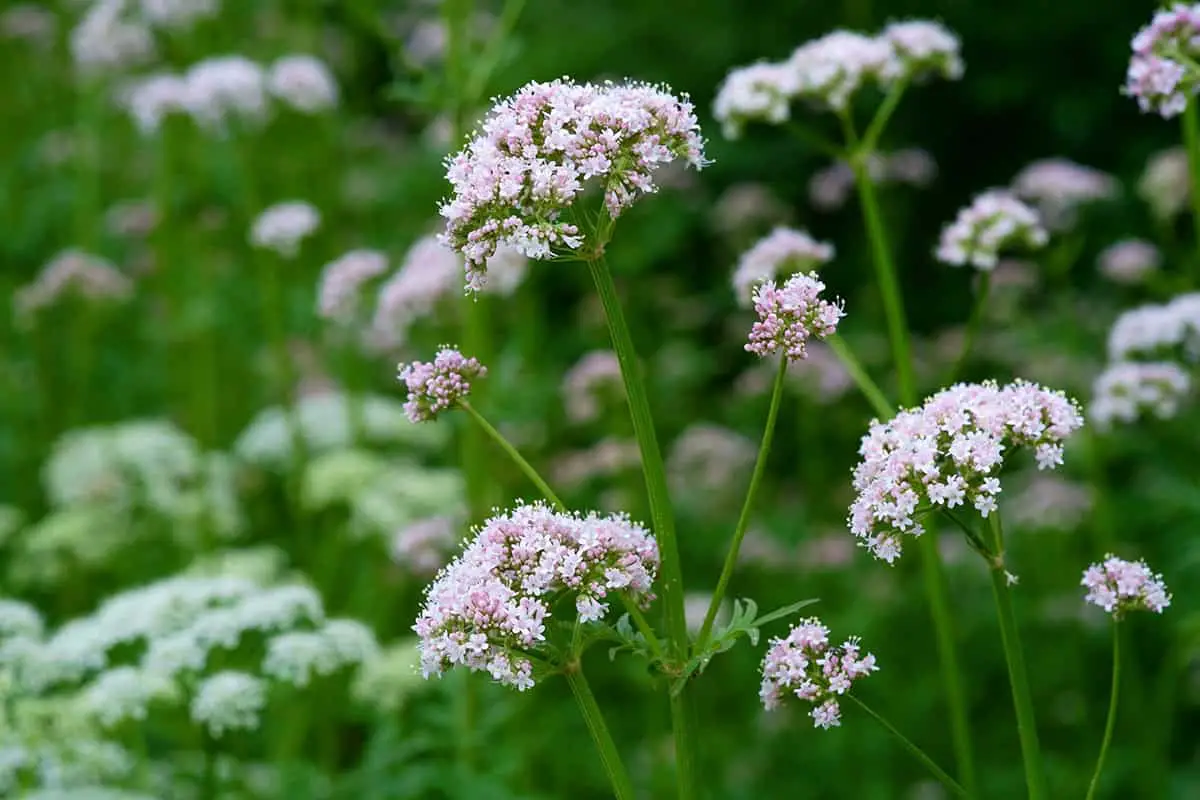
Valerian is a plant commonly used for sleep disorders and anxiety. Your garden could benefit from its lovely pink flowers. Native to Europe and Asia, it is now also found in North America.
The plant grows up to two meters tall. Its roots have a distinct smell and contain compounds with sedative effects. These include sesquiterpenes and iridoids. When you use valerian as a medicinal herb, do not overuse it. Long-term use may lead to side effects such as headaches or heart palpitations.
In your garden, valerian may spread easily. It can become weedy and even invasive. Manage it well to prevent displacing native species in the area.
When choosing herbal supplements, including those containing valerian, always opt for high-quality products. It’s important for your safety and the efficacy of the herb.
Skullcap (Scutellaria Lateriflora)
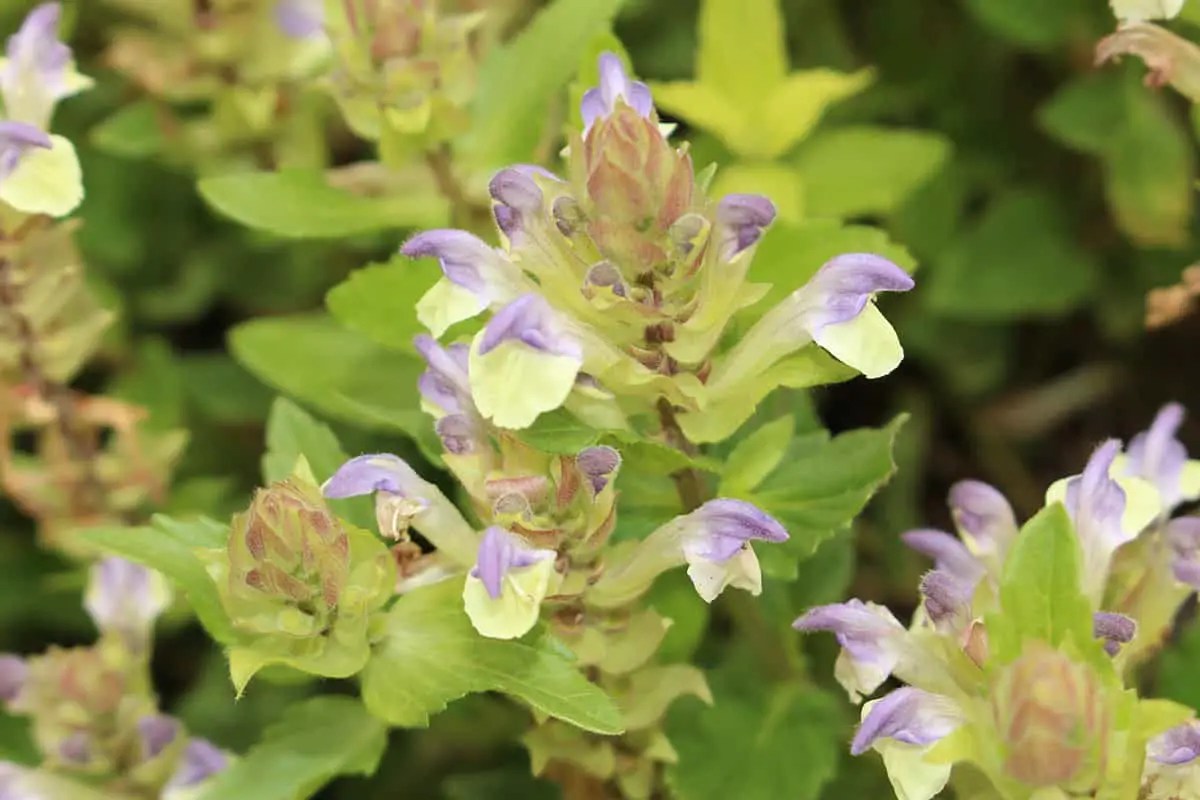
Skullcap is a perennial herb you might find growing in various parts of North America. Specifically, Scutellaria lateriflora is known as American skullcap, a species valued in herbal medicine. Researchers focus on its phytochemistry and botany. They pay close attention to how it functions as a medicinal plant.
This plant has a history in traditional wellness practices. One of its key roles is to promote relaxation. Studies suggest it has a calming effect. Key parts of the plant include its leaves and flowers, used to brew tea.
Within its native habitats, American skullcap grows best in wet environments. It thrives in shady areas, often along riverbanks or in woodland terrains. The plant’s physical characteristics include a ridged stem and two-lipped flowers. Other names for it reference the calyx’s shape, resembling a cap or helmet.
People across Florida cultivate the American skullcap for its medicinal qualities. It adapts to diverse areas, from dry grounds to moist soils. Its popularity in herbal supplements and as a tea ingredient is notable. Your garden could also host this plant, as it’s deer and rabbit-resistant.
For cultivation, certain methods are in research. Studies in North Carolina examine its growth in various conditions. Farmers interested in growing skullcap will find it a potentially rewarding herb.
Mullein (Verbascum Thapsus)
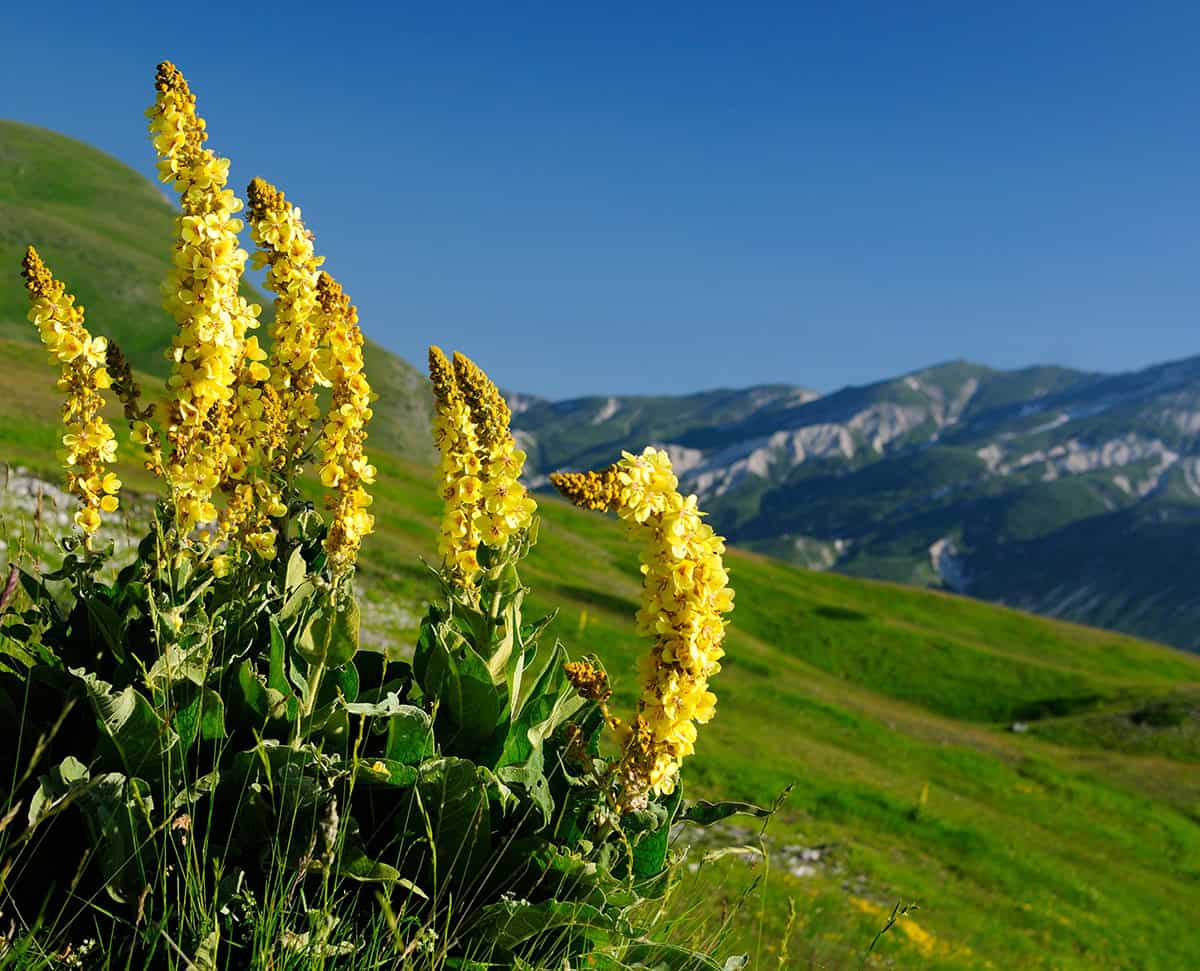
Mullein, known as Verbascum thapsus, is a wild plant with medicinal properties. You can identify it by its tall, yellow flowering stalks. People have used it for centuries in traditional medicine.
The plant has a rosette of leaves in its first year. These leaves are soft and felt-like to the touch. In its second year, mullein produces a flower spike that can reach impressive heights.
For medicinal use, you can harvest mullein leaves and flowers. They are often dried for teas or tinctures. These preparations are believed to help with respiratory issues.
Studies suggest mullein has anti-inflammatory and antimicrobial effects. This makes it a popular choice for soothing sore throats, coughs, and bronchial issues.
Comfrey (Symphytum Officinale)
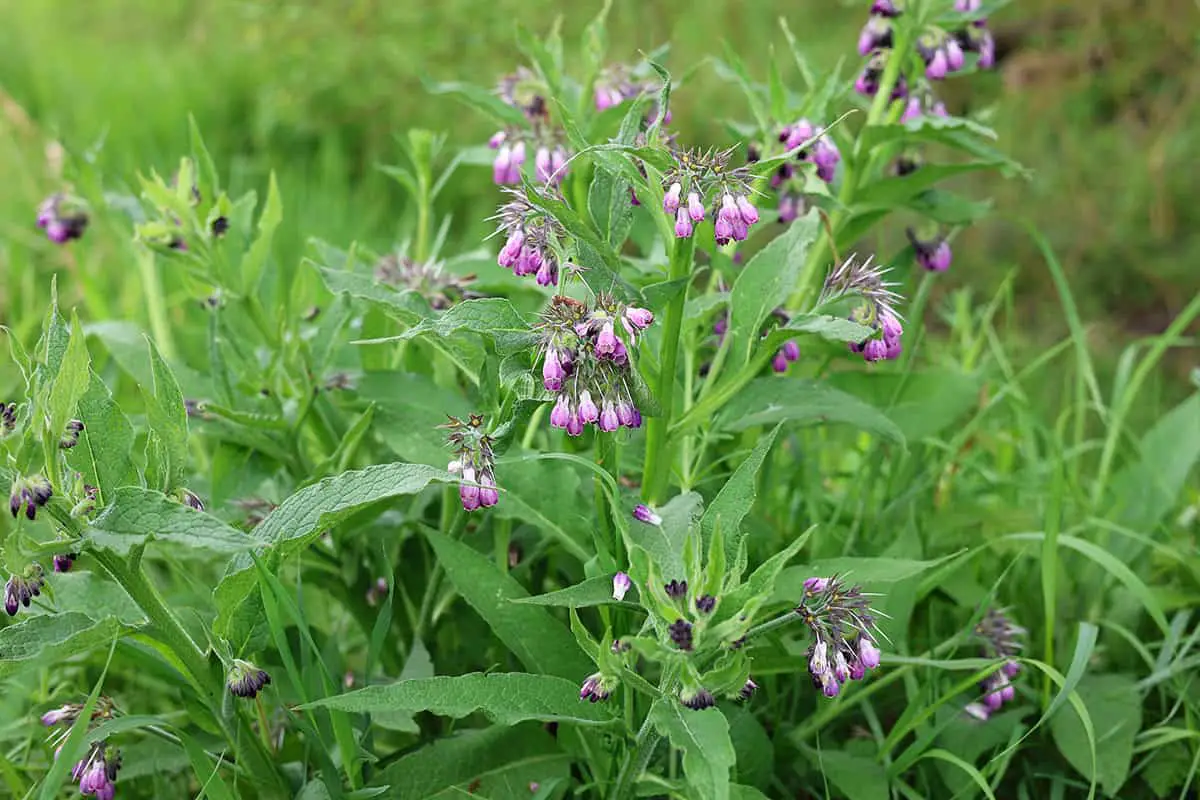
Comfrey, or Symphytum officinale, thrives in moist and fertile soil. You can identify it by its bristly lower leaves, which are beneficial when composting. This plant is a hardy herb, proving resilient in various growing conditions.
Rich in calcium and vitamins, comfrey serves as a culinary herb. Its leaves are often used to brew teas. They may also aid in making poultices, favored for their medicinal properties. The plant usually appreciates partial sunlight and can tolerate some drought.
When you grow comfrey, use root cuttings or crown divisions. It adapts well to most soils but prefers fertile, moist ground. Planting in spring promotes stronger establishment. Keep in mind that its use is subject to FDA regulations due to concerns about its safety if consumed in large amounts.
The leaves of comfrey can grow impressively large, up to 12 inches. This perennial herb may reach 5 feet in height and width at maturity. It is also deer-resistant, which makes it suitable for various garden settings.
Goldenseal (Hydrastis Canadensis)
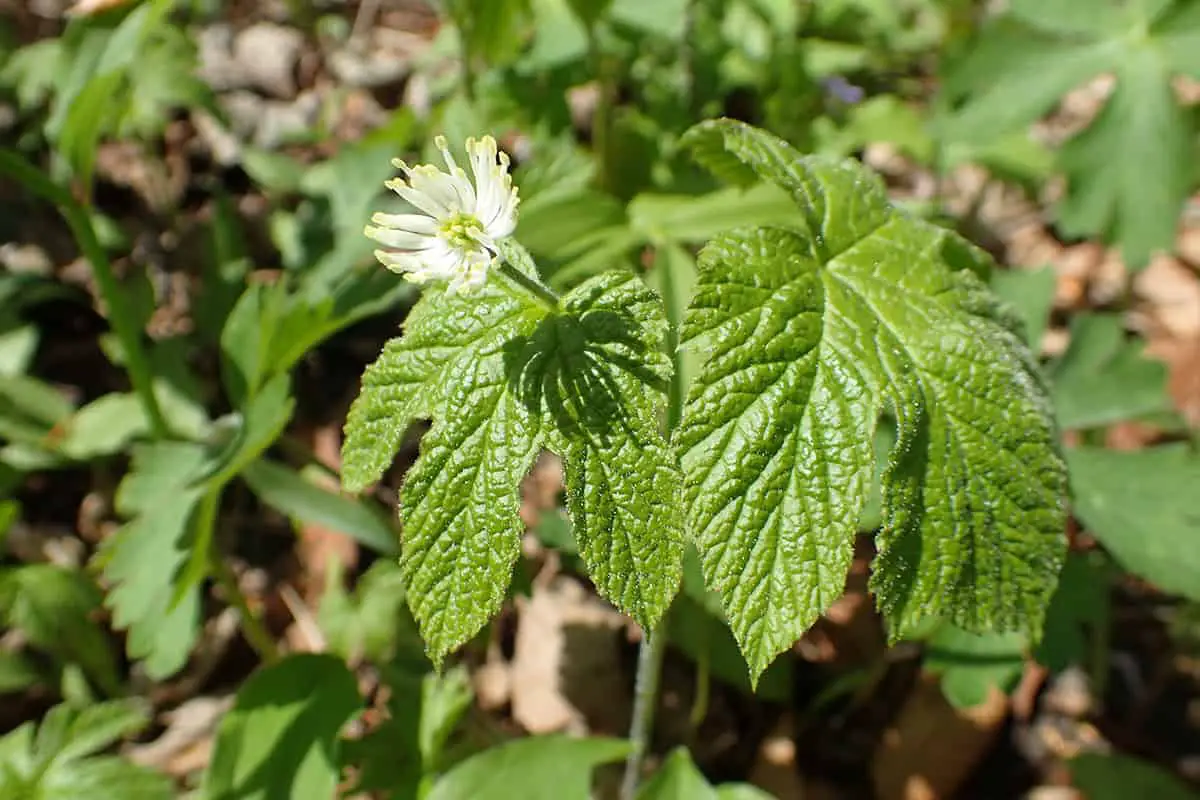
Goldenseal is a perennial herb native to North America. You can recognize it by its thick, yellow root and greenish-white flowers. Its use as a medicinal plant dates back centuries.
The plant grows in rich, wooded areas. It blooms in spring and has a single red berry. Goldenseal contains berberine, which can be beneficial for your health.
You might find Hydrastis canadensis in dietary supplements. People traditionally use it to support the immune system and for skin ailments. However, ensure you consult a healthcare provider before using any herbal products.
Overharvesting has led to a decline in wild goldenseal populations. You should be aware of conservation efforts when considering its use. Various initiatives encourage the sustainable cultivation of goldenseal.
Meadowsweet (Filipendula Ulmaria)
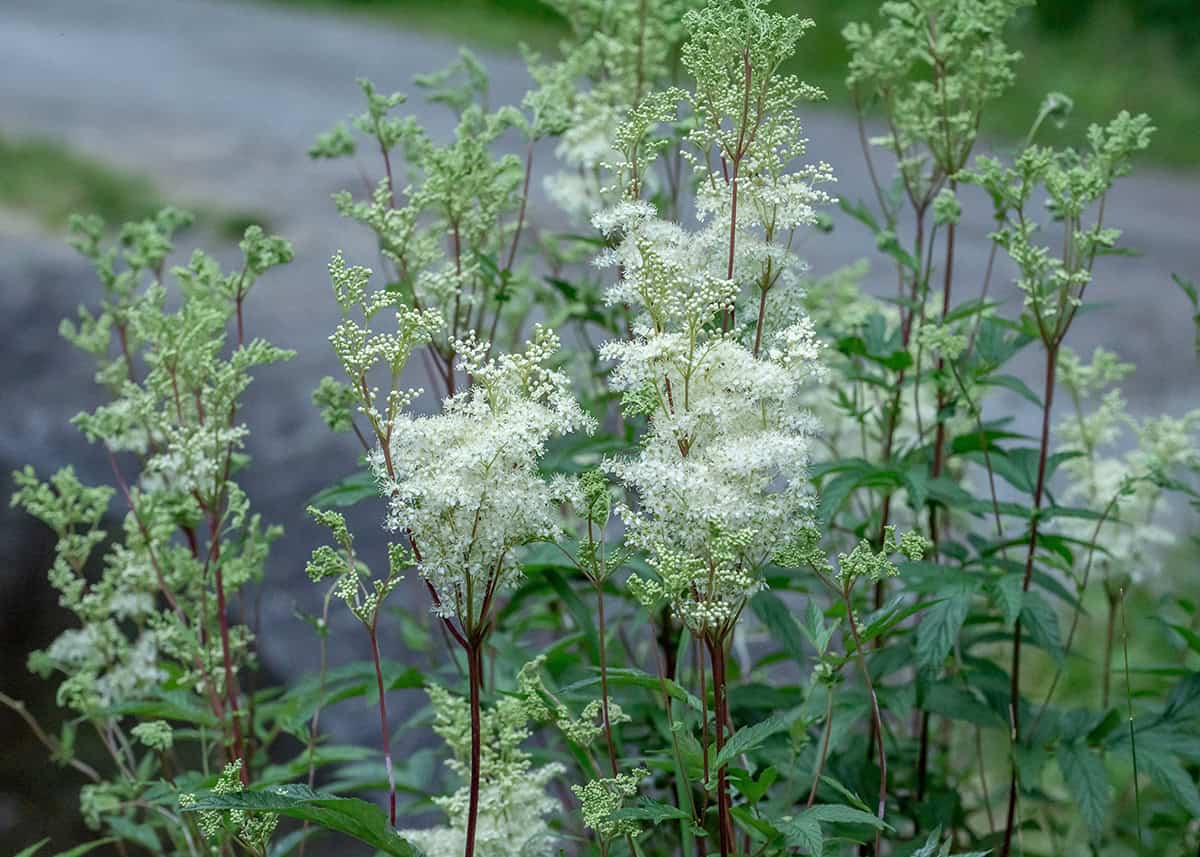
Meadowsweet, botanically known as Filipendula ulmaria, is a perennial herb that you might find in damp meadows and along riverbanks. Its towering stalks can grow up to four feet tall and are recognizable by their fluffy clusters of creamy white flowers. You may appreciate its sweet, almond-like fragrance wafting through the air during summer blooms.
This plant finds its roots in traditional medicine, often utilized for pain relief. The delicate blossoms contain compounds that were crucial in the development of aspirin. These include salicylic acid, which was first extracted from meadowsweet in the 19th century. Your historical interest might be piqued to learn that salicylic acid’s discovery was a significant milestone in pharmacology.
Phytochemicals and Research:
In addition to pain relief, meadowsweet offers various phytochemicals. These substances have intrigued the scientific community. The plant provides a suite of phytochemicals like flavonoids and phenolic acids. Such compounds contribute to the plant’s medicinal profile and have garnered attention for their potential anti-inflammatory properties.
Habitat and Growth:
Meadowsweet requires specific conditions to thrive. You’ll find this plant prefers moist soil and often resides in habitats less suitable for agriculture. Its ecological demands outline the nature of its growth, providing a marker of how plant growth responds to environmental factors.
Chicory (Cichorium Intybus)
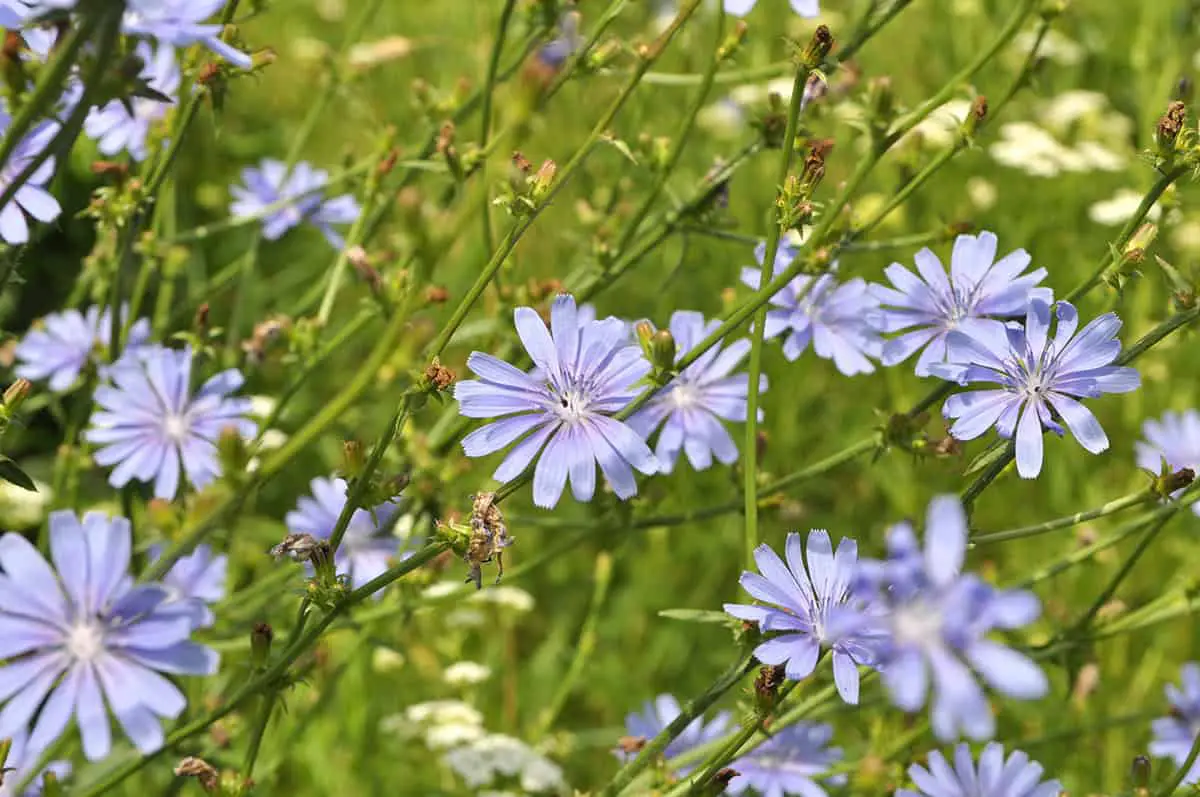
Chicory, or Cichorium intybus, is a hardy perennial herb. You might recognize its bright blue flowers along roadsides. This plant hails originally from Europe but has found a home across North America.
The roots of chicory are often ground to extend or substitute coffee. Moreover, young chicory leaves are bitter additions to salads.
Chicory thrives in various conditions. It’s less demanding and can grow up to six feet tall. You will often find it blooming from summer to early autumn.
It has a deep taproot and a rosette of leaves. Its flowers are usually blue and sometimes white or pink. Remember the plant’s signature blue flowers as you seek it out.
Medicinal Properties: You can use chicory for digestive problems. It has properties that may aid in reducing swelling and inflammation.
Horehound (Marrubium Vulgare)
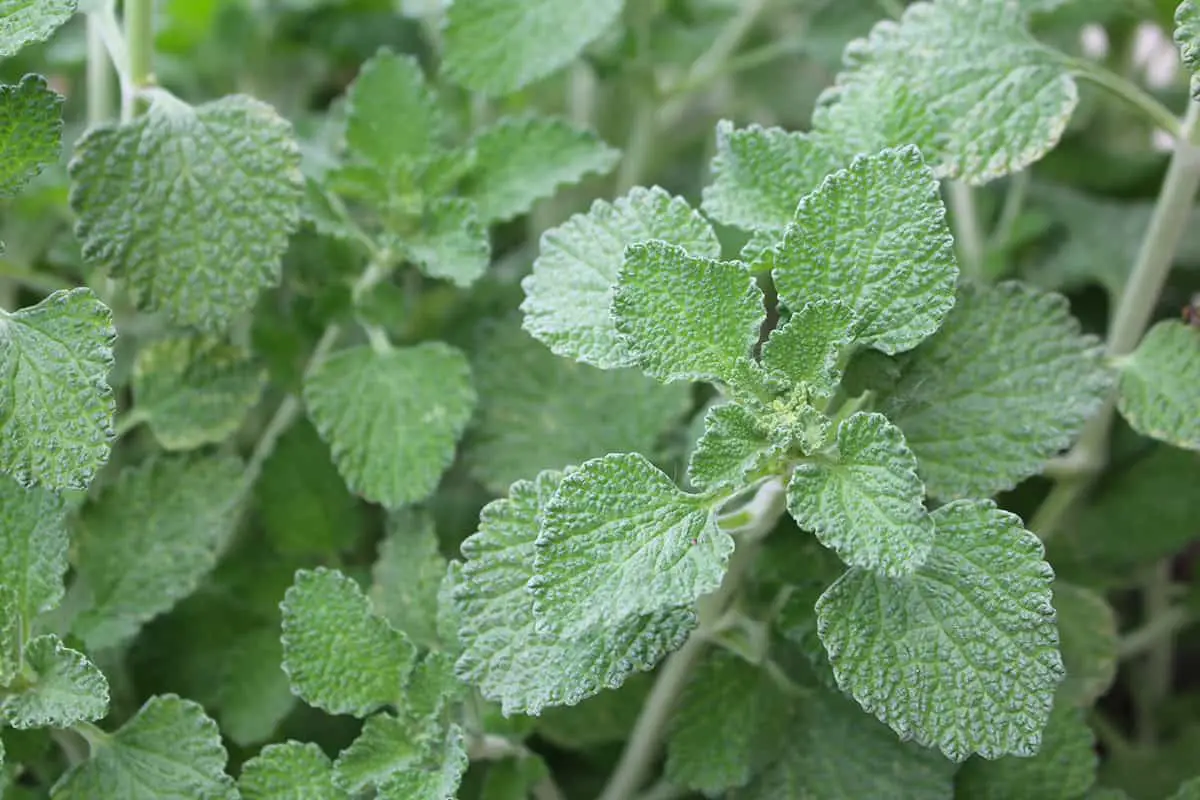
Horehound, also known as Marrubium vulgare, is a herb native to Europe, Asia, and Africa. You can recognize it by its white flowers and woolly leaves. Historically, people have used this plant for its medicinal properties.
The plant thrives in full sun and well-drained soil. It tolerates a wide range of pH levels and often grows in sandy or rocky soils. Gardeners value horehounds for their drought resistance.
Medicinal Properties:
Its leaves and flowers contain compounds like marrubiin. These have potential health benefits. For example, horehound has been used to soothe sore throats and aid digestion. It’s also a common ingredient in cough drops and syrups.
When you use horehound, start with small amounts. This is to ensure you do not have any adverse reactions. If you seek a horehound for health reasons, consult a healthcare provider first.
Feverfew (Tanacetum Parthenium)
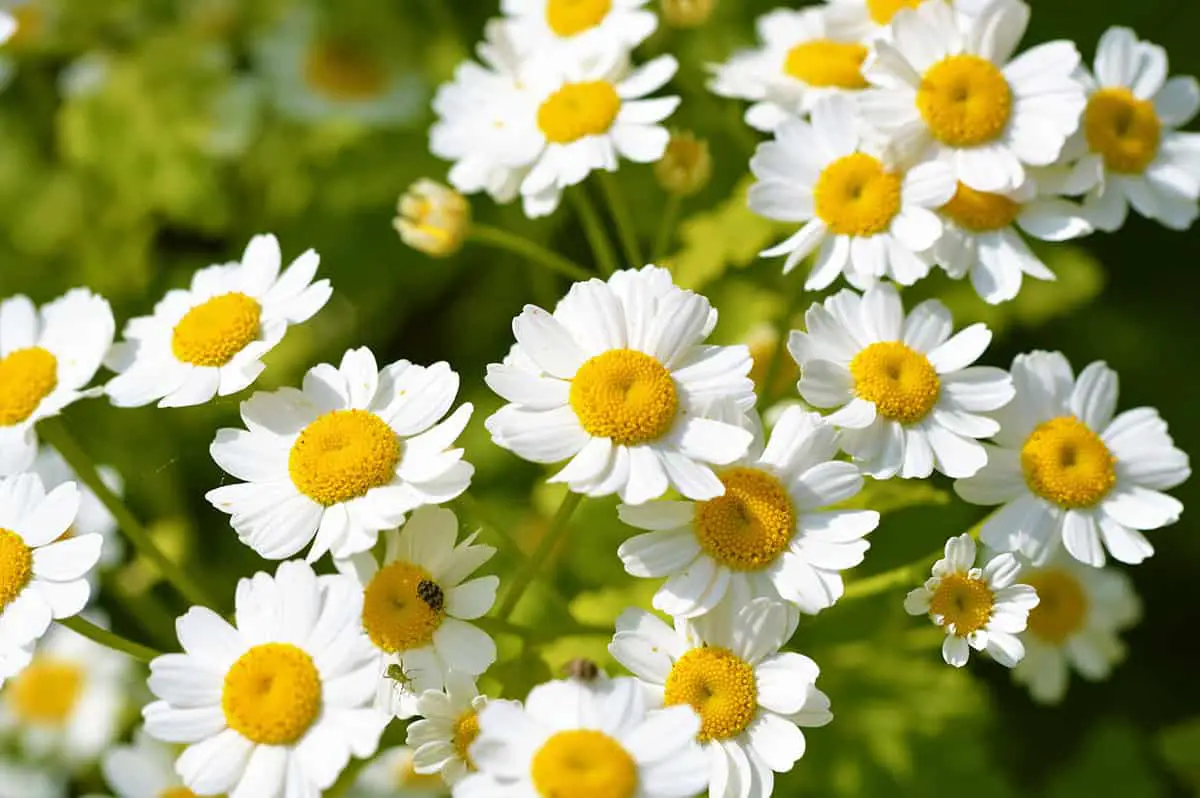
Feverfew, a medicinal herb, falls under the scientific name Tanacetum parthenium. It’s a perennial plant and you can identify it by its daisy-like flowers. Traditionally, feverfew is used to manage migraines.
The leaves of feverfew contain compounds known for their medicinal properties. You might be interested in feverfew because it’s used as a preventive treatment for migraine headaches. One important compound in feverfew is called parthenolide.
When you’re considering growing feverfew, understand it’s native to Southeast Europe and across parts of Asia. This plant thrives in many environments and can often survive with minimal care.
Feverfew has a rich history of use beyond headaches. You might also find it helpful for fevers, hence its name. However, make sure to consult with a healthcare provider before using feverfew, as it can interact with other medications.
